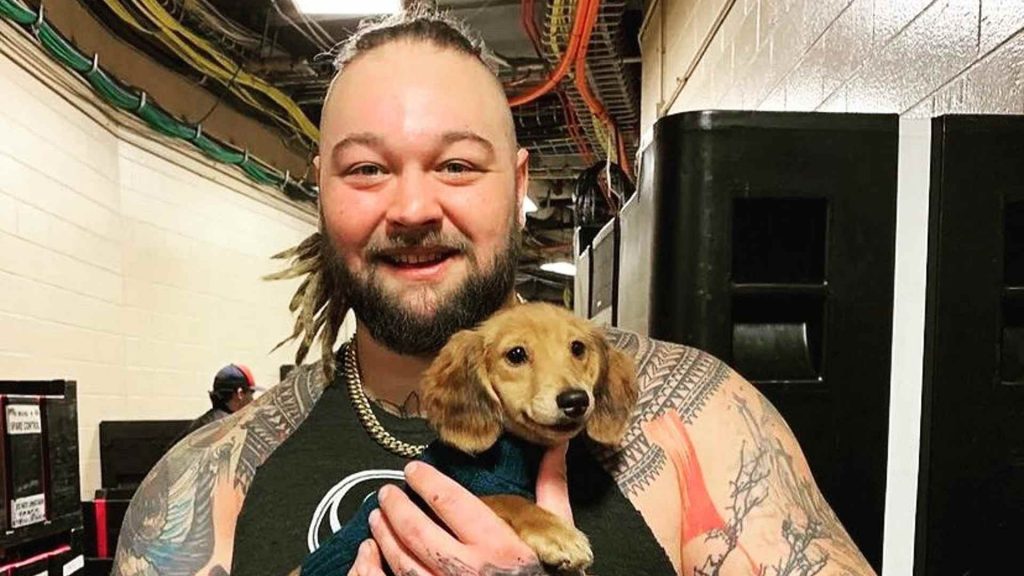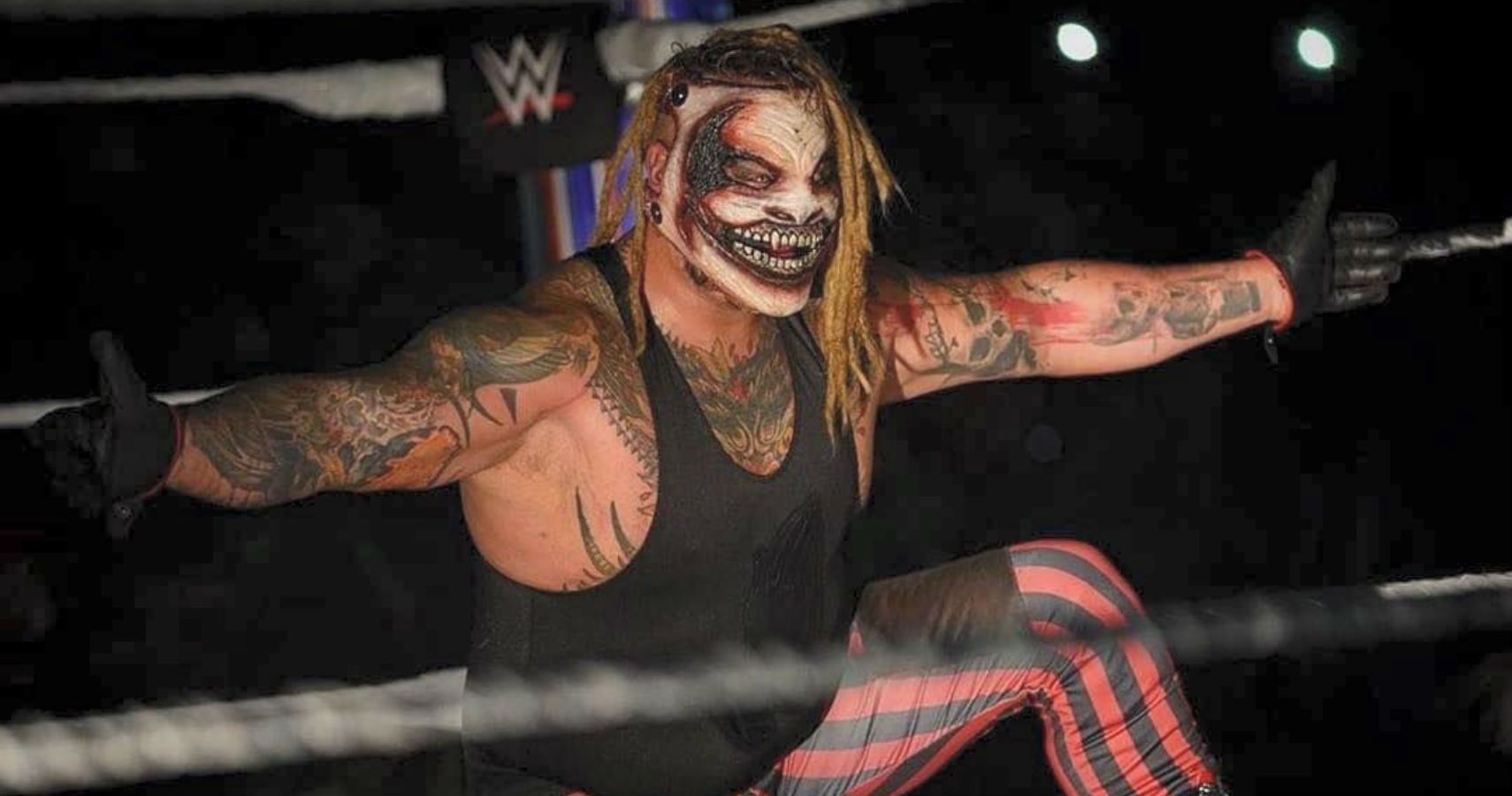Bray Wyatt's Tragic Demise: Uncovering The Details Of His Shocking End
Bray Wyatt's Death: A Puzzling Demise
Bray Wyatt, the enigmatic WWE superstar, has been a source of fascination for wrestling fans worldwide. However, a recent turn of events has left many wondering: how did Bray Wyatt die? Despite the morbid curiosity surrounding this question, it's crucial to clarify that Bray Wyatt, the persona portrayed by Windham Rotunda, is not deceased.
The confusion stems from a storyline in which Bray Wyatt's alter ego, The Fiend, was seemingly "killed off" during a cinematic match at the WWE's Extreme Rules event in 2021. However, this was merely a narrative device to write Wyatt off television while he took a hiatus from the company.
- Denzel Washington Height How Tall Is He
- The Ultimate Guide To The Below Deck Cast Meet The Yachties Behind The Drama
In reality, Windham Rotunda, the man behind the Bray Wyatt character, is alive and well. He has since returned to the WWE under a new persona, LA Knight, showcasing his versatility and adaptability as a performer.
The "death" of Bray Wyatt serves as a reminder of the captivating power of professional wrestling. While the storylines and characters may push the boundaries of reality, it's essential to remember that they are ultimately works of fiction. The performers behind these characters continue to entertain and inspire audiences long after their on-screen personas have met their demise.
| Name | Birthdate | Birthplace |
|---|---|---|
| Windham Rotunda | May 23, 1987 | Brooksville, Florida |
Bray Wyatt's Death
The question "how did Bray Wyatt die" has sparked intrigue and confusion among wrestling fans. Despite the morbid curiosity surrounding this topic, it's important to clarify that Bray Wyatt, the persona portrayed by Windham Rotunda, is not deceased. However, the storyline involving his alter ego, The Fiend, has raised questions that warrant exploration.
- Czech Wife Swap The Ultimate Guide To Understanding The Trend
- Is Pamela Koslow Still Alive Today Discover The Truth
- Fictional Demise: The Fiend's "death" was a narrative device to write Wyatt off television while he took a hiatus from the WWE.
- Character Evolution: Wyatt's return under a new persona, LA Knight, showcases his adaptability as a performer.
- Storyline Significance: The Fiend's demise served as a turning point in Bray Wyatt's WWE journey.
- Fan Reaction: The storyline generated a range of emotions, from shock to intrigue, among fans.
- Media Speculation: Rumors and speculation surrounding Wyatt's departure fueled the confusion about his status.
- Wrestling Narrative: The "death" of a character is a common trope in wrestling storylines.
- Performer Well-being: Wyatt's hiatus highlighted the importance of mental health and well-being in the wrestling industry.
- Audience Engagement: The storyline demonstrated the power of storytelling to captivate and engage audiences.
These aspects underscore the complex and multifaceted nature of Bray Wyatt's "death" storyline. It serves as a reminder that professional wrestling is a form of entertainment that blends reality and fiction to create captivating narratives. The performers behind these characters continue to entertain and inspire fans, even after their on-screen personas have met their demise.
1. Fictional Demise
The storyline involving the demise of Bray Wyatt's alter ego, The Fiend, is intricately connected to the question "how did Bray Wyatt die." It's crucial to understand this fictional demise as a narrative tool employed by the WWE to address Wyatt's real-life hiatus from the company.
In the world of professional wrestling, storylines often intertwine with performers' personal lives. When Wyatt required time off for mental health reasons, the WWE creatively wrote him off television by having The Fiend "die" during a cinematic match. This allowed Wyatt to step away from the while maintaining the continuity of the storyline.
The Fiend's demise served as a catalyst for Wyatt's eventual return under a new persona, LA Knight. It demonstrated the WWE's commitment to storytelling and its ability to adapt to real-life circumstances. Furthermore, it highlighted the importance of performer well-being in the wrestling industry.
Understanding the connection between the Fiend's demise and Wyatt's hiatus provides a deeper appreciation of the complexities of professional wrestling. It showcases the interplay between fiction and reality and the lengths to which the WWE goes to maintain compelling narratives while respecting the needs of its performers.
2. Character Evolution
The connection between Bray Wyatt's return under a new persona, LA Knight, and the question "how did Bray Wyatt die" lies in the narrative evolution of his character. The demise of The Fiend marked a turning point in Wyatt's WWE journey, paving the way for the emergence of LA Knight.
This character evolution showcases Wyatt's adaptability as a performer. It demonstrates his ability to transition seamlessly between vastly different personas, each with its own unique characteristics and motivations. The creation of LA Knight allowed Wyatt to explore new creative avenues and further develop his skills as an entertainer.
Moreover, the transition to LA Knight signifies Wyatt's resilience and determination to overcome adversity. After taking time off for mental health reasons, Wyatt's return under a new persona symbolized his commitment to the wrestling industry and his passion for performing.
Understanding the connection between Wyatt's character evolution and his "death" storyline provides a deeper appreciation of the complexities of professional wrestling. It highlights the importance of storytelling and the ability of performers to adapt and evolve their characters over time. Furthermore, it underscores the resilience and dedication of wrestlers who overcome personal challenges to continue entertaining audiences.
3. Storyline Significance
The connection between "Storyline Significance: The Fiend's demise served as a turning point in Bray Wyatt's WWE journey" and "how did bray wyatt die" lies in the narrative impact of The Fiend's demise on Wyatt's character and the overall WWE storyline.
The Fiend's demise marked a pivotal moment in Wyatt's WWE career. It signified the end of a major chapter in his character's development and paved the way for a new direction. The loss of The Fiend forced Wyatt to confront his inner demons and ultimately led to the creation of his new persona, LA Knight.
Furthermore, The Fiend's demise had significant implications for the WWE storyline. It created a power vacuum within the Wyatt Family and opened up new possibilities for other characters to step into the spotlight. The demise of such a dominant and enigmatic figure also sent shockwaves throughout the WWE Universe, leaving fans eager to see what would come next.
Understanding the connection between The Fiend's demise and Bray Wyatt's journey provides a deeper appreciation of the complexities of professional wrestling storytelling. It highlights the importance of character development, narrative twists, and the ability of performers to adapt and evolve their characters over time.
4. Fan Reaction
The connection between "Fan Reaction: The storyline generated a range of emotions, from shock to intrigue, among fans." and "how did bray wyatt die" lies in the significance of fan engagement and its impact on the overall narrative.
Fan reaction is a crucial component of professional wrestling, as it provides feedback on the effectiveness of storylines and characters. In the case of Bray Wyatt's "death," the range of emotions elicited from fans served as a testament to the storyline's impact.
The shock and intrigue generated among fans fueled speculation and discussion about Wyatt's future, keeping the character relevant even after his on-screen demise. This engagement contributed to the storyline's success and demonstrated the power of fan investment in shaping the direction of professional wrestling.
Understanding the connection between fan reaction and Bray Wyatt's "death" highlights the importance of audience engagement in storytelling. It underscores the symbiotic relationship between performers and fans, where each influences the other to create a dynamic and engaging experience.
5. Media Speculation
The connection between "Media Speculation: Rumors and speculation surrounding Wyatt's departure fueled the confusion about his status." and "how did bray wyatt die" lies in the impact of media speculation on public perception and the narrative surrounding a performer's departure.
In the case of Bray Wyatt, rumors and speculation about his departure from WWE spread rapidly through various media outlets, including wrestling news websites, social media, and mainstream publications. This speculation often lacked concrete information and was based on anonymous sources or unfounded claims.
The media's role in fueling confusion about Wyatt's status is significant because it creates a narrative that may not align with reality. In the absence of official confirmation, rumors and speculation can spread unchecked, leading to widespread misinformation and misunderstanding among fans.
Furthermore, media speculation can have a negative impact on the performer's reputation and career. Unfounded rumors can damage their credibility and make it difficult for them to secure future bookings or opportunities. It is important for fans to consume media reports critically and to rely on reputable sources for accurate information.
Understanding the connection between media speculation and Bray Wyatt's "death" highlights the importance of media responsibility and the need for fans to critically evaluate the information they consume. It also underscores the impact that rumors and speculation can have on a performer's career and the overall wrestling landscape.
6. Wrestling Narrative
The connection between "Wrestling Narrative: The 'death' of a character is a common trope in wrestling storylines" and "how did Bray Wyatt die" lies in the narrative significance and impact of character deaths within the context of professional wrestling storytelling.
In professional wrestling, the "death" of a character is a narrative device used to create drama, shock value, and emotional resonance. By killing off beloved or hated characters, writers can generate intense reactions from the audience and advance storylines in unexpected directions. This trope has been employed throughout wrestling history, from the infamous Montreal Screwjob to the tragic passing of Owen Hart.
The "death" of a character can serve multiple purposes within a wrestling storyline. It can be used to:
- Write a performer off television due to injury, suspension, or personal reasons.
- Create a catalyst for a new storyline or character development.
- Evoke sympathy or anger from the audience, intensifying their investment in the narrative.
- Shock and surprise the audience, keeping them engaged and anticipating future developments.
In the case of Bray Wyatt, his character's "death" was a pivotal moment in his WWE journey. It allowed him to transition to a new persona, LA Knight, and explore a different side of his creativity. While the circumstances surrounding his character's demise were unique, the narrative trope of character death played a significant role in shaping the storyline and generating fan interest.
Understanding the connection between wrestling narratives and character deaths provides a deeper appreciation of the storytelling techniques used in professional wrestling. It highlights the importance of narrative twists, emotional engagement, and the ability to keep audiences invested in the ongoing storylines.
7. Performer Well-being
The connection between "Performer Well-being: Wyatt's hiatus highlighted the importance of mental health and well-being in the wrestling industry" and "how did bray wyatt die" lies in the recognition of the physical and mental demands placed on professional wrestlers and the need to prioritize their well-being.
- Mental Health Awareness: Bray Wyatt's hiatus brought attention to the mental health challenges faced by wrestlers, including the pressures of performing, travel, and personal issues. His decision to step away from the ring to focus on his mental health sparked a conversation about the importance of seeking help and breaking the stigma surrounding mental health in the wrestling industry.
- Physical Demands: Professional wrestling is a physically demanding sport that can take a toll on wrestlers' bodies. Wyatt's hiatus highlighted the need for wrestlers to prioritize their physical well-being and to have access to proper healthcare and support systems to prevent injuries and promote longevity in their careers.
- Work-Life Balance: The wrestling industry's demanding schedule can make it difficult for wrestlers to maintain a healthy work-life balance. Wyatt's hiatus emphasized the importance of wrestlers having time for personal relationships, hobbies, and activities outside of wrestling to prevent burnout and promote overall well-being.
- Industry Support: Wyatt's hiatus prompted WWE and other wrestling organizations to examine their policies and support systems for wrestlers' mental and physical health. This led to initiatives such as mental health counseling, wellness programs, and increased awareness of the importance of performer well-being.
These facets underscore the complex and demanding nature of the wrestling industry and the need for wrestlers to prioritize their well-being. Bray Wyatt's hiatus served as a catalyst for positive change and increased awareness of the importance of mental health and well-being in professional wrestling.
8. Audience Engagement
The storyline surrounding Bray Wyatt's "death" serves as a prime example of the captivating power of storytelling in professional wrestling. By skillfully weaving together elements of mystery, intrigue, and emotional depth, the writers were able to keep audiences engaged and invested in the narrative. The storyline's success in generating buzz and discussion among fans is a testament to the enduring appeal of compelling storytelling in this industry.
Moreover, the storyline's ability to elicit a range of emotions from fans highlights the importance of audience engagement as a crucial component of professional wrestling. The shock, intrigue, and speculation surrounding Wyatt's demise created a sense of communal excitement and anticipation among fans. This emotional investment not only enhances the overall viewing experience but also fosters a sense of loyalty and connection between the audience and the performers.
Understanding the connection between audience engagement and compelling storytelling is essential for wrestlers and creative teams alike. By crafting narratives that resonate with fans on an emotional level, they can create memorable moments and build a dedicated following. The storyline surrounding Bray Wyatt's "death" stands as a shining example of how effective storytelling can captivate and engage audiences, leaving a lasting impact on the world of professional wrestling.
FAQs about Bray Wyatt's Fictional Demise
This section addresses frequently asked questions and misconceptions surrounding the storyline involving Bray Wyatt's character, The Fiend, and his subsequent "death" in WWE.
Question 1: Is Bray Wyatt actually dead?
Answer: No, Bray Wyatt, the individual behind the character, is alive and well. The "death" of The Fiend was a narrative device used by WWE to write Wyatt off television while he took a hiatus from the company.
Question 2: Why did WWE decide to "kill off" The Fiend?
Answer: The decision to have The Fiend "die" was primarily driven by Windham Rotunda's (Bray Wyatt's) need to take a break from WWE for personal reasons, including mental health and well-being.
Question 3: Will The Fiend ever return to WWE?
Answer: While it is possible that The Fiend could make a return in the future, there is no official confirmation or timeline for such an event.
Question 4: What does The Fiend's "death" mean for Bray Wyatt's WWE career?
Answer: The Fiend's demise allowed Wyatt to transition to a new character, LA Knight, showcasing his versatility and adaptability as a performer.
Question 5: How did fans react to The Fiend's "death"?
Answer: The storyline generated a wide range of reactions from fans, including shock, intrigue, and speculation, demonstrating the emotional impact and captivating nature of the narrative.
These FAQs provide clarification and address common misconceptions surrounding Bray Wyatt's "death" storyline, offering a deeper understanding of the narrative and its implications for the performer and the WWE.
Conclusion
The exploration of "how did Bray Wyatt die" has delved into the intricate narrative surrounding his character's demise, the factors that contributed to this storyline, and its impact on the wrestling industry. While The Fiend's "death" marked a turning point in Wyatt's WWE journey, it is essential to remember that it was a fictional event designed to facilitate the performer's hiatus.
The storyline surrounding Bray Wyatt's "death" serves as a reminder of the captivating power of storytelling in professional wrestling. By skillfully weaving together elements of mystery, intrigue, and emotional depth, the writers were able to keep audiences engaged and invested in the narrative. Furthermore, the storyline's ability to elicit a range of emotions from fans highlights the importance of audience engagement as a crucial component of professional wrestling.
As Bray Wyatt continues to evolve his craft and explore new creative avenues, his legacy in the wrestling industry remains secure. The Fiend's "death" may have marked the end of an era, but it also opened up new possibilities for Wyatt as a performer. His journey is a testament to the enduring power of storytelling, the resilience of the human spirit, and the boundless potential of professional wrestling.
- Brandi Passante The Intriguing Controversy And Public Fascination
- Woody Allens Wife An Exclusive Interview And Untold Story

Bray Wyatt died at the age of 36. How did Bray Wyatt die?

Bray Wyatt Hopes The Fiend's Run Of Hall Of Fame Attacks Leads To Sting

Bray Wyatt WWE world champion wrestler dies aged 36 News News Sky